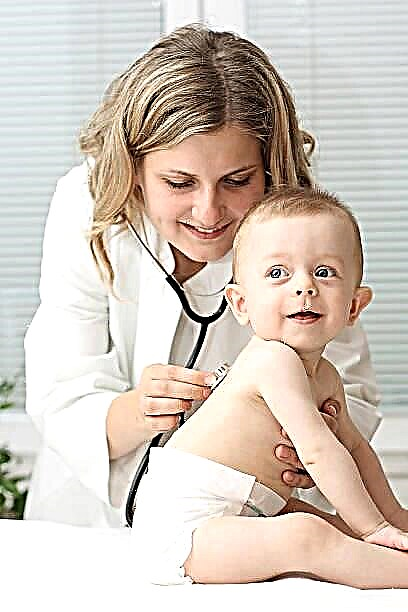Scarlet fever was first isolated as a separate disease back in 1554 by the Neapolitan physician J. F. Ingracia. It is curious that the idea of scarlet fever changed from time to time, even in the mouths of famous doctors, from a mild infection to a serious illness comparable to the plague. In the historical process of the study, many theories have been proposed about the causes of the manifestation of one or another feature of the course of scarlet infection.
Currently, scarlet fever has been studied well enough to successfully treat it and prevent complications.
What do we know about the causative agent of scarlet fever?
Scarlet fever is caused by the bacterium streptococcus, which belongs to group A (there are 17 groups in total, which are designated by the letters of the Latin alphabet). According to its ability to cause hemolysis on nutrient media, it is beta-hemolytic streptococcus.
It has the following structural features:
- protein M:
- it is part of the cell wall;
- it is the main virulence factor and antigen;
- provides attachment to mucous membranes, inhibits the activity of phagocytes;
- interferes with the attachment of the components of the compliment system,
- promotes the development of autoimmune pathology;
Despite the fact that antibodies to protein M provide strong immunity, due to the many variants of this protein, streptococci do not form a strong defense against repeated streptococcal infection.
- capsule.
It also provides virulence to streptococcus. Provides protection against phagocytosis. It consists mainly of hyaluronic acid, which is part of the connective tissue of the body. This provides a masking effect and evasion from agents of the immune system;
- enzymes: streptolysin O and S.
They destroy blood cells, immune system, cardiomyocytes;
- toxins: pyrogenic and cardiohepatic. The first causes the activation of T-lymphocytes and the overproduction of interleukin-1, a tumor necrosis factor, disrupting the balance of the immune system. The second damages the cells of the myocardium and liver.
Group A streptococci are very adapted to the outside world, they can be found in food, on household items. In humans, they are part of the microflora of the skin. They also colonize mucous membranes, mainly of the oropharynx and nasopharynx.
Scarlet fever is characterized by autumn-winter seasonality.
In the autumn-winter period, the frequency of carriage of streptococcus in schoolchildren reaches 25%.
They have the following features:
- remain viable for up to 1 hour when heated in a humid environment to a temperature of 70 degrees. And at 65 degrees they can already survive up to two days;
- when dried in blood or pus can persist for up to several months;
- sensitive to the action of disinfectant solutions;
- well tolerated freezing.

How can a child get scarlet fever?
Patients with scarlet fever are contagious for 7-10 days, and in the presence of complications, this period is lengthened.
Carriage of B-hemolytic streptococcus is also important.
Infection routes:
- airborne (talking, sneezing, coughing);
- food (dairy products and food stored at room temperature play a special role);
- contact (skidding from household items through dirty hands).
The main contingent susceptible to infection with scarlet fever are organized children aged 2 to 7 years and younger students.
Newborns and children under 6 months of age rarely get sick due to the received maternal immunity against streptococcus and its toxin.
In preschool organizations, when new groups are recruited, the incidence rises at 4-8 weeks from the moment of formation.
An important role in the development of scarlet fever, as a disease, when infected with streptococcus is played by the absence of antitoxic immunity. If it is present, then other forms of streptococcal infection occur: pharyngitis, tonsillitis.
Symptoms of scarlet fever in children and adults
The incubation period for scarlet fever is 2-7 days.
Entrance gate: more often it is the mucous membranes of the upper respiratory tract, less often - damaged skin, uterus.
The onset of the disease is acute: the temperature rises to febrile numbers, the throat is severely sore when swallowing, and a headache appears.
Typical Symptoms
A characteristic feature of scarlet fever is a combination of the following symptoms:
- intoxication,
- rash,
- angina.
Rash
It manifests itself after a few hours on the neck and chest in the form of separate small, pink spots (there may be small vesicles at first) on a hyperemic background, which quickly spread throughout the body. The photo shows a characteristic feature of a scarlet fever rash - its thickening in natural folds, in places of folds. There, the rash is usually brighter colored and even hemorrhagic elements are found, since the skin in these places is more exposed to friction and the vessels are injured.
Dark red streaks of thickened rash in the folds are called Pastia's symptom. It is important in diagnosing erased forms of scarlet fever, when the rash on other parts of the body is weak.
The main element of the rash is roseola, up to 2 mm in diameter, the center is colored brighter than the periphery. Roseola sticks out slightly above the skin surface, so the skin feels rough to the touch.
On the face, the rash has distribution features: it concentrates on the cheeks, and the nasolabial triangle is not affected. This symptom of bright cheeks with a pale nasolabial triangle is called Filatov's symptom.
The rash lasts 3-7 days and disappears without a trace. After the rash disappears, peeling of the skin appears (the upper layer of the epidermis soaked in inflammatory exudate is exfoliated). On the face it is softer, and in other parts of the body, especially the palms and soles, it is large-lamellar. Peeling lasts from 2 to 6 weeks.
Scarlet fever is characterized by some swelling of the face, ears, neck due to the infiltration of subcutaneous fat with inflammatory exudate.
With scarlet fever, submandibular lymphadenitis develops and the anterior cervical group of lymph nodes increases.
In the Middle Ages in Spain, scarlet fever had a name translated as "iron collar" because of the pronounced cervical lymphadenitis.
Angina
Most common in scarlet fever necrotizing tonsillitis... In this case, the tonsils are completely covered with a dirty gray coating or necrosis can be focal in nature. Such a sore throat passes in 7-10 days. Also, scarlet angina can be catarrhal, follicular and lacunar.
Looking into the mouth reveals two more additional clinical features of scarlet fever.
- characteristic type of language: in the first days of the disease, the tongue is coated with a thick white bloom, then on 2-3 days it begins to clear and becomes bright red. The taste buds of such a tongue are enlarged and protrude above the surface. This symptom was called "crimson tongue";
- delimited bright hyperemia of the pharynx. It covers the tonsils, uvula, back wall of the pharynx, soft palate. There is a clear, uneven border of inflammation.
This symptom used to be poetically compared to the flames in the throat. It lasts for a long time, even with mild forms of scarlet fever.
Intoxication syndrome
Its severity depends on the severity of the course of the infectious disease and is due to the action of streptococcus toxin. It can manifest itself as mild malaise with headache and low-grade fever, and impaired consciousness with meningeal symptoms.

Other symptoms of scarlet fever
On the part of the cardiovascular system
In the first period, when irritation of the sympathetic nervous system with a toxin prevails, there is an increase in blood pressure, an increase in heart rate. In the second period, as the intoxication fades away, the tone of the parasympathetic system begins to prevail. As a result, the pressure drops below normal, the heart sounds become muffled, the borders of the heart expand, and a systolic murmur appears at the apex. In the aggregate, respiratory arrhythmia appears. Such phenomena can last from 2 weeks to 6 months. In the future, they pass without consequences.
From the liver and biliary tract
The liver increases in size. Yellowness of the sclera is noted.
Scarlet fever classification
By form:
- Typical form (all of the above symptoms are characteristic of it).
- Atypical form:
- extrabuccal scarlet fever (wound, burn);
- erased scarlet fever.
By severity:
- easy (moderate intoxication, angina catarrhal, rash is not abundant and passes quickly);
- moderate (severe intoxication, fever up to 40 degrees, severe lymphadenitis, necrotic tonsillitis. This form is often complicated);
- severe form in two versions:
- toxic scarlet fever (occurs more often in adults and older children. Characterized by neurotoxicosis, seizures, clinical picture of infectious-toxic shock. Rash with a hemorrhagic component, cyanotic color);
- septic (more often in young children. Local purulent-necrotic changes in the tonsils, lymph nodes with the development of abscesses, phlegmon come to the fore).
Features of scarlet fever in adults
Scarlet fever in adults is not as common as in childhood. In adults, extrabuccal scarlet fever is more common, therefore, the sanitary-epidemiological regime and the processing of instruments are given special importance in surgical, burns and maternity wards.
In adults, this disease is usually mild. For them, the course of scarlet fever without a rash is typical. All clinical symptoms are mild and short-lived.
Possible complications of scarlet fever. Why is a childhood infection dangerous?

Scarlet fever in children is more often complicated by various diseases than in adults. Complications are divided into three groups, based on the pathogenesis of scarlet fever:
- It is based on the effect of the toxin on the nervous and cardiovascular systems... This group includes:
- infectious toxic shock;
- the development of acute cardiovascular failure (collapse).
- Bacterial complicationscaused by the addition of additional pathogenic microflora:
- purulent lymphadenitis;
- purulent otitis media;
- purulent meningitis;
- sepsis, etc.
- Complications caused by allergic exposure to streptococcus (these complications are more common in adults):
- diffuse glomerulonephritis;
- myocarditis, endocarditis;
- synovitis;
- vasculitis.
It is also possible for such an unpleasant phenomenon as re-infection with streptococcus and the resumption of scarlet fever by a new clinic. This can happen if there is a violation of the sanitary and epidemiological regime in the department or improper patient care at home.
Confirmation of the diagnosis of scarlet fever
Diagnosis of scarlet fever takes place in two stages:
Collecting an epidemiological history, assessment of the clinical symptoms of the disease, differential diagnosis between the following diseases:
- measles (it is distinguished by a catarrhal period, the stages of the appearance of a rash, Filatov-Koplik spots, a large-spotted rash on light skin);
- pseudotuberculosis (with him there is a gastrointestinal disorder, a small-spotted rash thickens on the feet and hands like gloves and socks);
- rubella (intoxication with it is weak, the lymph nodes are enlarged in the occipital and posterior cervical);
- drug disease (the rash is characterized by a combination of various elements from spots to blisters, the rash is localized on the extensor surfaces, buttocks, itching).
Laboratory diagnostics:
- clinical blood test: it has expressed leukocytosis with a shift of the leukocyte formula to the left, accelerated ESR;
- general urine analysis: it may have an increased amount of protein, microhematuria;
- express method: smears are taken from any focus of scarlet fever and beta-hemolytic streptococcus A is detected by a coagglutination reaction. The result is ready in 30 minutes;
- bacteriological method: the material is sown on media and the growth of the pathogen is detected, sensitivity to antibiotics is determined;
- serological method determination of antibodies to O - streptolysin is used to detect the persistence of the pathogen in the case of chronic infection.

Scarlet fever treatment
Hospitalization in a hospital
Hospitalization is carried out with scarlet fever for clinical and epidemiological indications.
Need hospitalization:
- persons with severe and moderate scarlet fever;
- all patients, if it is impossible to isolate them from people who have a high risk of contracting scarlet fever and there is a danger of provoking an epidemic.
In the hospital, patients are placed in a separate box for 2-3 people. Contact with patients from other wards is prohibited.
Infusion therapy is carried out, in the presence of complications - consultation of narrow specialists, if necessary - transfer to the intensive care unit.
Discharged from the hospital for about 10 days with clinical recovery.
Ambulatory treatment
Patients with mild illness are treated on an outpatient basis. The patient is isolated in a separate room, where daily wet surface treatment and airing are carried out, individual household items, dishes, and linen are used. Clothes and linen are subject to frequent change and subsequent boiling. Cleaning is carried out with disinfectant solutions.
Essential drugs
Scarlet fever is treated with antibacterial drugs. This is the main therapy. The following antibiotics are used:
Penicillins:
- phenoxymethylpenicillin, by mouth with a mild form of scarlet fever;
- sodium and potassium salts of penicillin intramuscularly with a mild course in a hospital.
Cephalosporins:
- with a mild degree of scarlet fever and allergy to penicillins, cephalosporins of the 1st and 2nd generation are used;
- with an average and severe course of scarlet fever, cephalosporins of 3 generations are used,
Macrolides.
They are alternative antibiotics for intolerance to penicillin drugs. Erythromycin is used more often.
The term of antibiotic therapy is at least 7 days.
Local therapy consists in rinsing the throat and mouth with antiseptic solutions (for example, tomicide, furacillin, hexoral, etc.)
Accompanying therapy: probiotics, cardiotropic drugs, antipyretics, etc.

Recovery period: features of the daily regimen and diet
The regimen in the first 5-7 days of the disease is strictly bed. Further - the usual one with limited physical activity, adherence to the sleep-wake regime.
Diet: in the early days, there should be a dairy-plant diet, mechanically and thermally gentle, enriched with vitamins, then, when the condition improves, the diet is expanded.
Quarantine in DUs and schools
In children's organizations, special tactics are used in relation to contact children and employees in order to prevent the spread of infection.
The following activities are carried out:
- If a case of scarlet fever is found in a group or class, then quarantine is imposed for up to 7 days. At this time, medical supervision of contact children and employees is carried out.
- If organized children were in contact with scarlet fever at home, then they are not allowed into the team for 7 days.
- The admission of a child who has had scarlet fever into the team is allowed 12 days after recovery.
- If contact persons fall ill with scarlet fever or sore throat, they are admitted to the institution only 22 days after the day they fell ill.
- Sick employees of children's institutions and schools after clinical recovery can be transferred temporarily for 12 days to work that excludes close contact with children.
Control cultures are taken before discharge. Joining the team is allowed after a negative result. If the convalescent scarlet fever continues to secrete streptococcus, then additional antibiotic therapy with erythromycin should be carried out for 5-7 days
Dispensary observation - 1 month. Control tests of urine, blood and ECG recording are done on days 10 and 30 after recovery.
Prevention of scarlet fever
There is no specific prophylaxis for scarlet fever. The main methods of prevention are reduced to:
- elementary sanitary measures (hand washing, proper storage of food, regular cleaning of premises);
- epidemiological measures: isolation of the patient and the imposition of quarantine on children's institutions, medical supervision of contact;
- rehabilitation of chronic foci of infection (caries treatment, treatment of chronic tonsillitis and adenoiditis);
- strengthening immunity through a healthy lifestyle, nutritious food, and adequate exposure to the fresh air.

Conclusion
The prognosis for scarlet fever is favorable. The risk of complications with early diagnosis and antibiotic therapy is minimal. Prevention of this infection is simple. Today there is an epidemiological decline in the incidence (50-60 cases per 100 thousand population). But, given the scale of the spread of self-medication in society, one must remember about the existence of this infection and not neglect an early visit to a doctor.
Literature
- Geotar-Media National Guidelines for Infectious Diseases 2009.
- Handbook of a practical doctor "Infectious Diseases", publishing house "Encyclopedia" Moscow 2004.
- National Guide to Pediatrics Volume 1, Geotar-Media Publishing House 2009.
- "DIPHTHERIA, MEASLES, SCARLATINE IN THE PRACTICE OF A DENTIST-DENTIST" Study guide edited by Professor K. G. Karakov Stavropol, 2014.
- O. K. Pozdeev. "Medical Microbiology" publishing house "Geotar Media" 2001.



